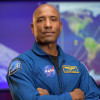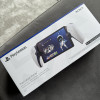Hayabusa2: Successful touchdown on asteroid
Interview with
The mystery of how our solar system came to be has puzzled scientists for centuries; how did life develop? And where did our water come from? On 22nd February 2019, a Japanese mission started to tackle those age old questions, as Izzie Clarke reports…
Izzie - In 2014 the Japanese Aerospace Exploration Agency, a.k.a. JAXA, launched Hayabusa 2 spacecraft, the size of a fridge, to explore a nearby asteroid that they hope can tell us about the materials that formed our solar system over four and a half billion years ago. Hayabusa 2 finally caught up with the asteroid Ryugu in June last year travelling in convoy until it was ready to take a closer look.
And now on Friday the 22nd of February the spacecraft began the task of collecting a sample of this rock to bring back to Earth. David Rothery from the Open University explained why this asteroid was so special.
David - Carbonaceous chondrites which is the type represented by this asteroid are meteorites which, when we find them on the earth, they wither away quite quickly because it's quite weak friable material so it's very rare to find really fresh examples. From what we have got we can tell it's very primitive material, it's not been heated or melted, so it's the building blocks from which all the planets have been made. So going to a fresh piece of carbonaceous chondrite material that hasn't been subjected to the Earth's atmosphere is going to give us untainted material from the birth of the solar system that hasn't been processed, so it's a great target for sampling
Izzie - Now what’s actually on board this Hayabusa 2?
David - It's quite a complicated little spacecraft. There are cameras onboard, we can do a little bit of mineralogy from close range. But the spacecraft has got four Rovers on board, three of which have been deployed so far and they've been down to the surface and they've hooped around a little. They haven’t got any wheels, there’s not enough gravity to get any traction on the surface - they’re hopping around on the surface. The chief aim of the mission though is to bring back some samples and that's what's just been attempted for the first time. The rovers helped identify places that weren't too bouldery and had enough fine dust because the sampling technique is to bring the main spacecraft within touching distance of the surface. So a kind of horn device covers part of the surface and then they fire a pellet into the surface which kicks up some dust if you like, and some dust gets captured in the sample capsule which then is sealed and is brought back to Earth.
Izzie - Essentially, Ryugu is like a giant floating pile of rubble. Because Hayabusa II isn't able to land on its surface, it sort of floats above the asteroid waiting to scoop up any displaced rubble and dust as the pellet is shot into its surface. And if you think that sounds tricky, you'd be absolutely right.
David - The difficulty is that the dust you kick up is quite fine and not a lot of it, and you've got to hope enough of it gets inside your little capsule to be a worthwhile sample. That's a gamble, but any sample brought back to Earth is going to give valuable information because it will be completely fresh pristine material, at least fresh from space. None of these are the kind of material that you'll get from a meteorite that’s fallen to Earth because that's been subject to the Earth's atmosphere on the way in and however long it's been sat on the ground before being collected.
Izzie - The gravity on this object is not very strong so how challenging is that to coordinate a mission?
David - Well yes, it's a one kilometre sized body so the surface gravity varies negligible. If you land on it you're likely to bounce. The tiny rovers that have been deployed, they've done tiny little hops around but they're very leisurely hops so it's a very difficult object to get a hold of, and sampling it is a problem. If you go to the surface to try and grab something, all you're gonna do is push yourself away. Hence the sampling strategy to fire a pellet into it and catch some of the dust kicked off. Low gravity gives you quite a difficult environment to work in.
Izzie - But, all things going well in December 2020, that sample will make its way back to us on Earth. This mission isn't just about finding out how our solar system came to be. It's pushing the forefront of technology and trying to see how humans can take a sample from an object that's 180 million miles away and then bring it back. But how can some rock and dust reveal so much?
David - Well what you can do with samples on the ground is subject them to very precise geochemical analysis and, in particular, you can fingerprint where the sample came from. Different parts of the solar system are characterised by different signatures. And this is important for example to tell us where the Earth's water came from. It used to be supposed, for example, that a lot of the Earth's water was supplied my comets. But you may remember the mission to Comet 67P, the Rosetta mission, that measured the signature of the water in that comet and that doesn't match signature of the water in the Earth's oceans. So assuming that comet is representative, which is quite a big if, it suggests that maybe the Earth's oceans weren't supplied by water delivered by comets. Well maybe the Earth's ocean water was sweated out from hydrous minerals delivered by carbonaceous chondrites hitting the Earth. We'll get an idea of that when we've fingerprinted the material from Ryugu that’s been brought back by Hayabusa 2.










Comments
Add a comment